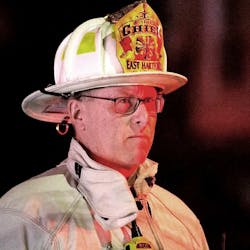Make no mistake, there certainly is a place where data (factual information, such as measurements and statistics, that’s used as a basis for reasoning, discussion or calculation) and fireground operations intersect. You should view data through the lens of your personal/company/department reality—what it really is, not what you wish that it were.
We can pause for a moment while you say that you don’t have time, that data doesn’t put out fires or “that scientific crap doesn’t work for (insert name of department).” Now that you have that out of your system, let’s take a look.
Data and size-up
Size-up, including the 360, is data acquisition. Unfortunately, most don’t treat it that way. Some of that is caused by brain overload, which is understandable, considering all of what an initial company officer/incident commander must contemplate. Another part is failing to limit what must be considered on arrival. I don’t care which size-up pneumonic that you use, but understand that there might be only three or four points:
- What am I looking at? (use/occupancy, construction/type, size)
- What/where is the problem? (amount of fire, fire location, people in the building)
- What can I do about it? (water on fire, control the building/air, account for people—both inside and ours)
At some point (e.g., arrival of another chief officer), you must ensure the data behind your decisions remains valid and relevant, particularly regarding construction/type, fire location and expected personnel. If you launched your operation on the belief of legacy construction, a first-floor fire and enough water but discovered lightweight construction, a basement fire and no serviceable hydrants, you must make changes. You must challenge the early assumptions.
How much water
Nearly every “old” fireground flow calculation is rendered ineffective because of the massive BTUs that are produced by modern materials that are on fire. Even the ISO calculation (250 gpm for two hours) likely isn’t enough to sustain an attack on a well-advanced dwelling fire.
Understanding where the fire is located (hydrant/no hydrant) goes a long way to determining how much effort that you will need to put into developing the water flow.
The next question is rate of flow. The quickest answer is likely more than you currently flow.
Get outside and flow your handlines off of your apparatus using your nozzles and personnel. Measure that to see whether what’s coming out of your nozzle is enough in today’s fire environment. Once you calculate the necessary engine pressure to get the desired flow, put it on the inside of the compartment closest to the pump panel.
Delivery system/direction
Choose the fire attack method that fits the staffing that you have, the water that you have and the type of building that’s on fire. At no point should “we always do …” enter the conversation. “We always prefer to do …” or “Our standard attack plan is …”—absolutely. However, someone with a brain must contemplate the data elements, make the decisions and deploy the people.
When it’s out
Various factors might cause extended burn time, but let’s assume that you did your job correctly and that the fire is out in a reasonable amount of time. Then what?
Teach. Use the fires that you go to learn, to teach the new members (and new officers) and to pass on knowledge. Part of teaching isn’t only the “What we did” but, using the data-driven decisions that were applied to the incident, “Why we did.” A quick and dirty after action review in the street before you pick up a single length of hose is a good place to start.
Clean. Gross decontaminate on scene and then thoroughly clean everything (hose, SCBA, PPE) at the station.
Fill the tank. Booster tank (water), SCBA (air) and stomach (better/cleaner water than you filled the booster with and, perhaps, an activity beverage and protein snack).
Data & the fireground
At this point, you’re ready to reset and prepare for the next event. Part of that should include a review of all of the data-driven decisions that you made during the fire. If you find data lacking from your decisions, make it a point to seek that out next time.

John Oates
John Oates is the president and CEO of the International Public Safety Data Institute, which specializes in fire service data and analytics. Prior to this appointment in November 2021, he enjoyed a 33-year fire service career, last serving as chief of the East Hartford, CT, Fire Department for 13 years. Oates has a Bachelor of Science from Franklin Pierce University and a Master of Science from Oklahoma State University and is a graduate of the National Fire Academy Executive Fire Officer Program.






